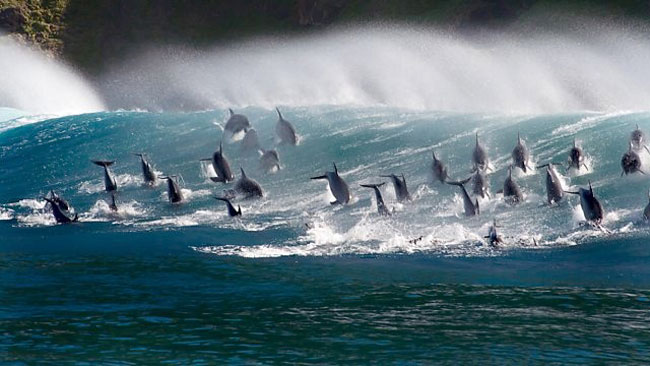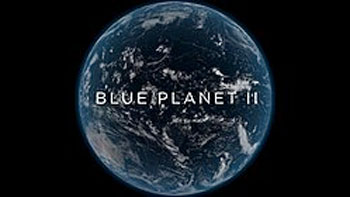Ask the Whales
Blue Planet II
BBC Natural History Unit

Almost a generation after The Blue Planet in 2001, the BBC released Blue Planet II in October of 2017. Again naturalist David Attenborough is the narrator and again the imagery, color and music composed by Hans Zimmer are somewhere well beyond mesmerizing.
Attenborough noted in a preview that “new science and technology enabled us to travel further and deeper than ever before. Footage reveals ocean animals and landscapes never seen before.”
Blue Planet II was nearly five years the making. There were 125 expeditions in 39 countries, 6,000 hours of dive footage from an estimated 4,000 dives in the 7 episode series.
There are times while watching it that you have to remind yourself that this is real. The color and images are so striking that at times it seems animated. Fish building nests on the sea floor for laying their eggs, seals hunting yellow fin tuna, dolphins rollicking in swells, hundreds of close ups and long-shots of all kinds of sea animals from seen for the first time tiny crabs to giant sperm whales diving thousands of feet.
A veteran of 50 years of narrating nature documentaries, Attenborough’s tone, meter and presence are honed to perfection. Never the carnival barker, Attenborough is behind the viewer offering a few preparatory facts about the jaw dropping visual that is about to unfold.

Attenborough’s comments are sometimes framed in data that snaps the reality on the screen into sharp perspective. More than 70% of the earth is covered by ocean. Less than 10% has been explored. Almost none of the deep ocean has been explored and almost nothing is known about it. While humans have by far had the greatest impact on the planet compared to the mass of other species the human presence is barely measurable.
Unlike The Blue Planet, there is coverage in Blue Planet II of the massive human impacts on the ocean — trash dumping and global warming among them — which is in stark contrast to astounding images of the ocean and the life in it. Having described the scale of the human presence on earth as relatively tiny compared to other biological forms, Attenborough also says that the sperm whale has a brain the size of a car. The approximate total volume of an average human brain might form about a 4 1/2" cube.
Whales communicate with sound. Maybe earth’s linguists should be learning to communicate with whales and ask them what they would do about the small brained minority mammal’s foot print on the planet. Blue Plant II could be the introduction to binge watching video for some viewers.
See Blue Planet II preview here.
